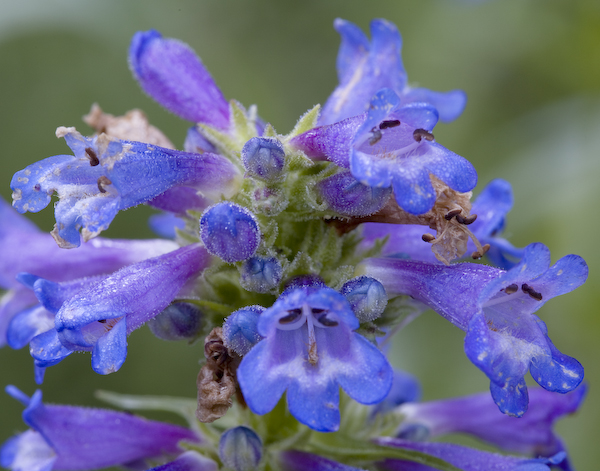The Early Bird Gets the Wildflower
Sometimes it just doesn’t seem like it should so hard to capture a good image of a wildflower. Indeed, for some wildflowers this may be true, but this flower was a bit more challenging than most and could not have been captured in this way at any other time than early in morning.
First, I needed the early (still in shadow) light to get this intense rendition of the blue; later in the day, the contrast in lighting tends to wash out some of the color. Second, there was just enough dew at this time of day to create the very tiny droplets of water on the hairs of the blossoms; any later and this dew would have evaporated. Third, I needed the flower to be motionless for two reasons: (1) I needed the flower to stay put long enough so that I could position the camera and focus properly; this flower is only about 3 cm across, so the camera is very close and even the slightest movement of the subject wreaks havoc with positioning and focusing. (2) I needed lots of depth-of-field (I used f/11 which, at this close distance, gave me enough of the flower in focus while keeping the background sufficiently blurred to not distract), and that called for a slow shutter speed of 1s. Once the sun starts warming up the surrounding terrain, a slight breeze begins, and that produces enough movement in the subject to severely challenge positioning, focus, and long exposures.
The lesson to be learned is that there are some particularly favorable conditions, the confluence of which may be unique to the early morning — lighting, dew, and the absence of a breeze. These conditions can either help with (or, as was the case here, make possible) the successful photography of wildflowers.

Tip of the Week
2007.12.17

